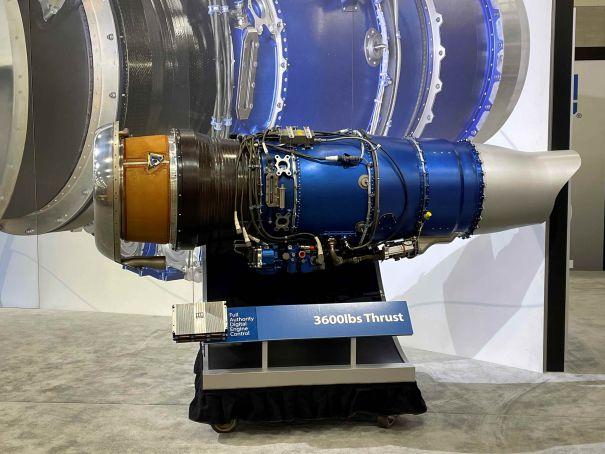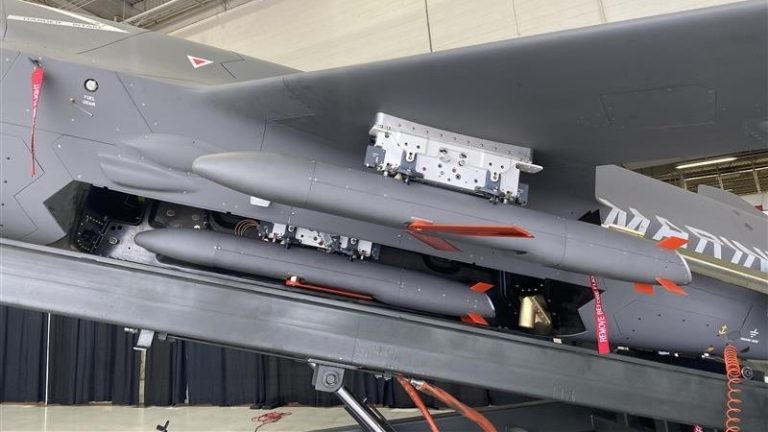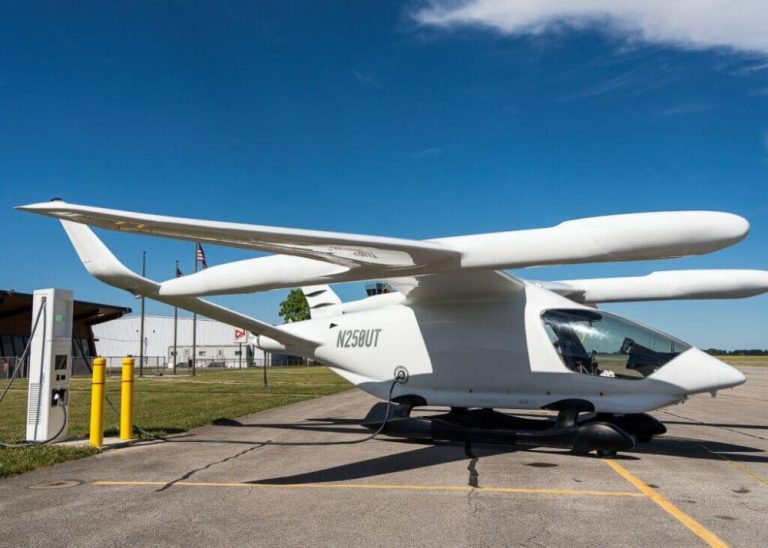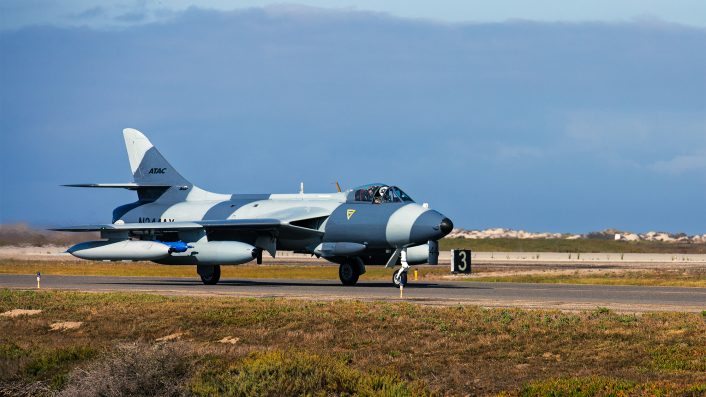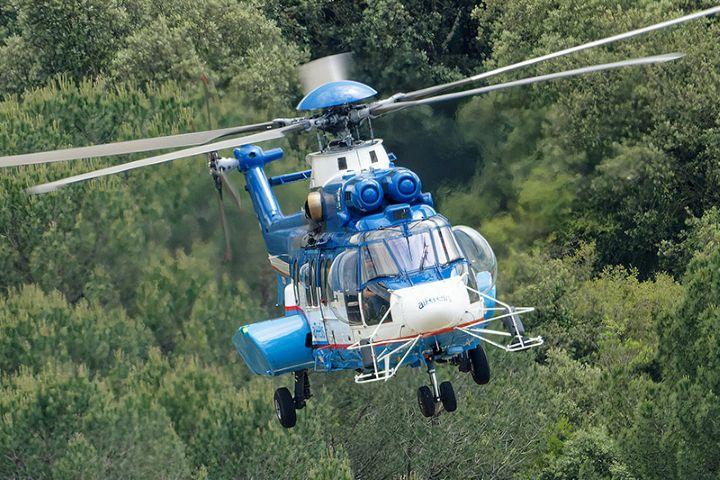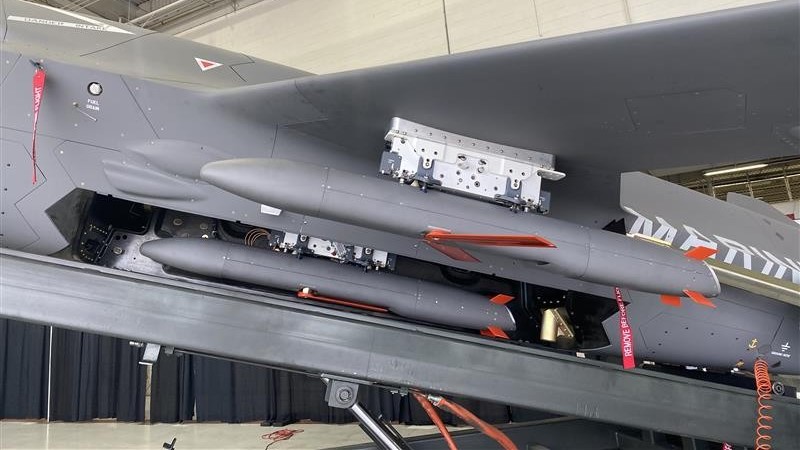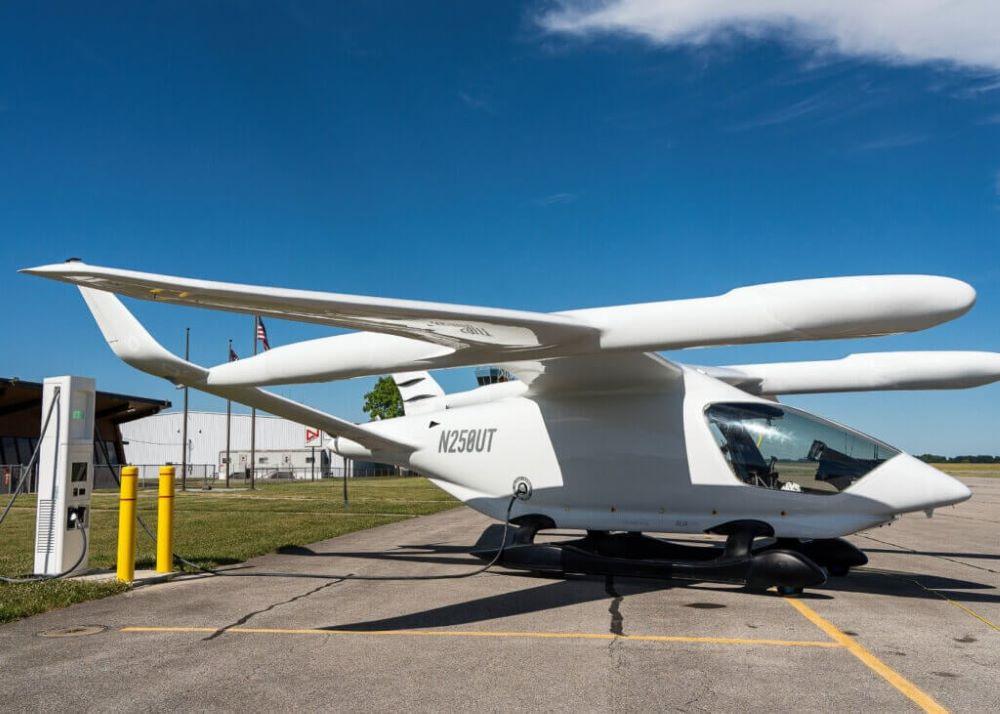https://aviationweek.com/themes/custom/particle/dist/app-drupal/assets/awn-logo.svg
This article is published in
The Weekly of Business Aviation part of Aviation Week Intelligence
Network (AWIN), and is complimentary through
Oct 22, 2025. For information on becoming an AWIN Member to
access more content like this, click here.
Guy Norris
October 15, 2025
Selected for the SyberJet SJ36, a version of the FJ44-4A was at NBAA-BACE 2025, revealing the passive-thrust-deflection nozzle designed for the Pilatus PC-24. Credit: Guy Norris/Aviation Week Network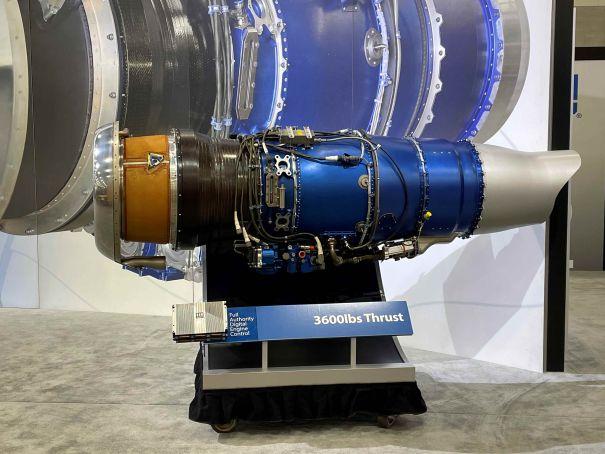
LAS VEGAS—SyberJet Aircraft has selected the Williams International FJ44-4A as the powerplant for its newly unveiled SJ36 light jet.
Rated at 3,620 lb.-thrust, the engine is already used by Textron’s Cessna CitationJet CJ4 and Pilatus PC-24, and for the SJ36 will give the nine-seat aircraft a targeted cruise speed of Mach 0.88. SyberJet’s SJ36 is scheduled to make its first flight with certification and first deliveries in 2032.
The launch of the FJ44-4-powered SJ36 re-establishes SyberJet’s link with Williams, which provided the earlier FJ44-2 for the long-abandoned SJ30 predecessor program. Phoenix-based SyberJet says that with a maximum takeoff weight of 18,500 lb., the combined thrust of the two FJ44s will give the SJ36 a 38.9% thrust-to-weight ratio. The company adds that with a range of 3,000 nm., the SJ36 “is expected to become the fastest and longest-range light jet in the world.”
SyberJet’s engine selection was announced here at NBAA-BACE, where Williams also revealed a rare glimpse of the -4A passive-thrust-deflecting nozzle design developed for the PC-24 application.
Normally enclosed and hidden from view by the nacelle, the exhaust nozzle incorporates a curved upper ramp that generates a Coandă effect to keep the exhaust airflow attached to the nozzle. The flow sticks to the surface due to viscosity and entrains surrounding airflow, creating a low-pressure area that pulls the jet toward the surface. The ramp directs the flow upwards by around 3 deg. at slow speeds, producing a tail-down thrust component on takeoff, which aids aircraft rotation. At higher speeds, the flow straightens with zero drag penalty.

